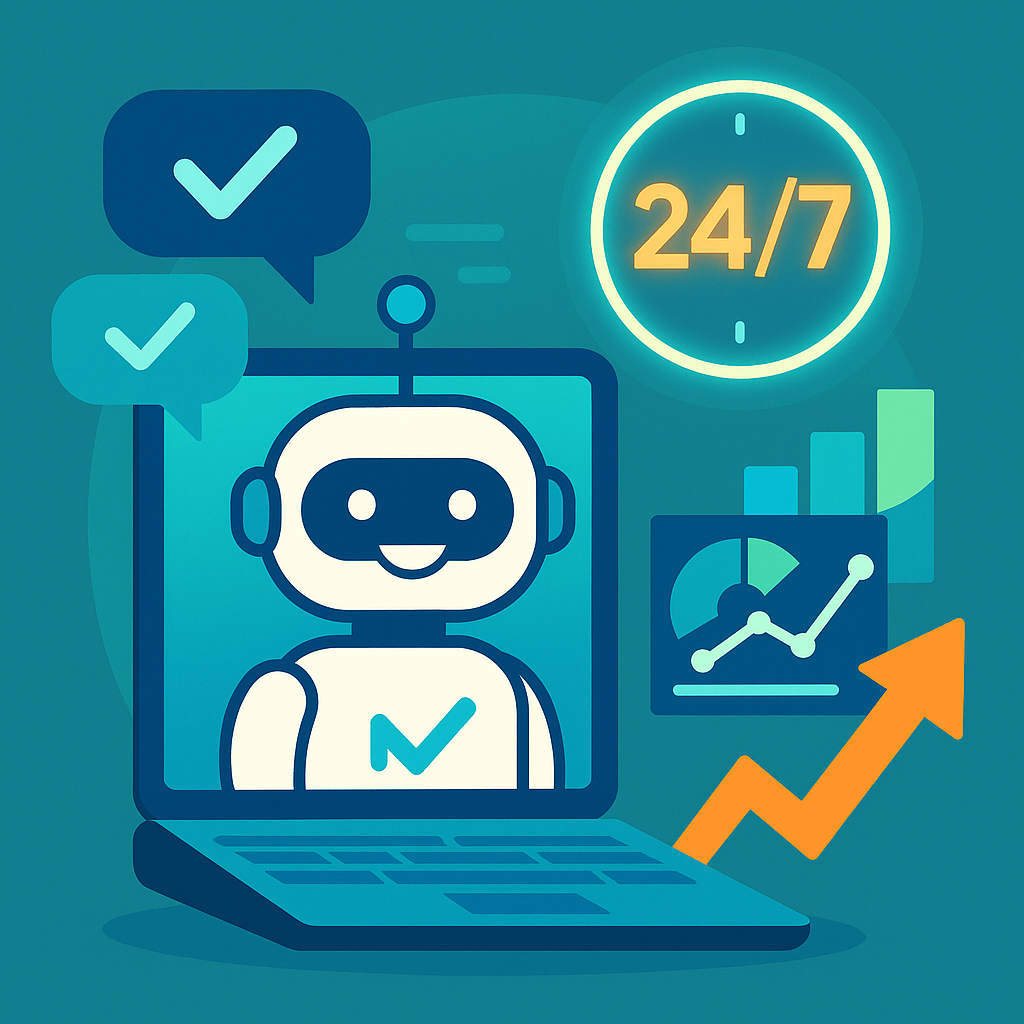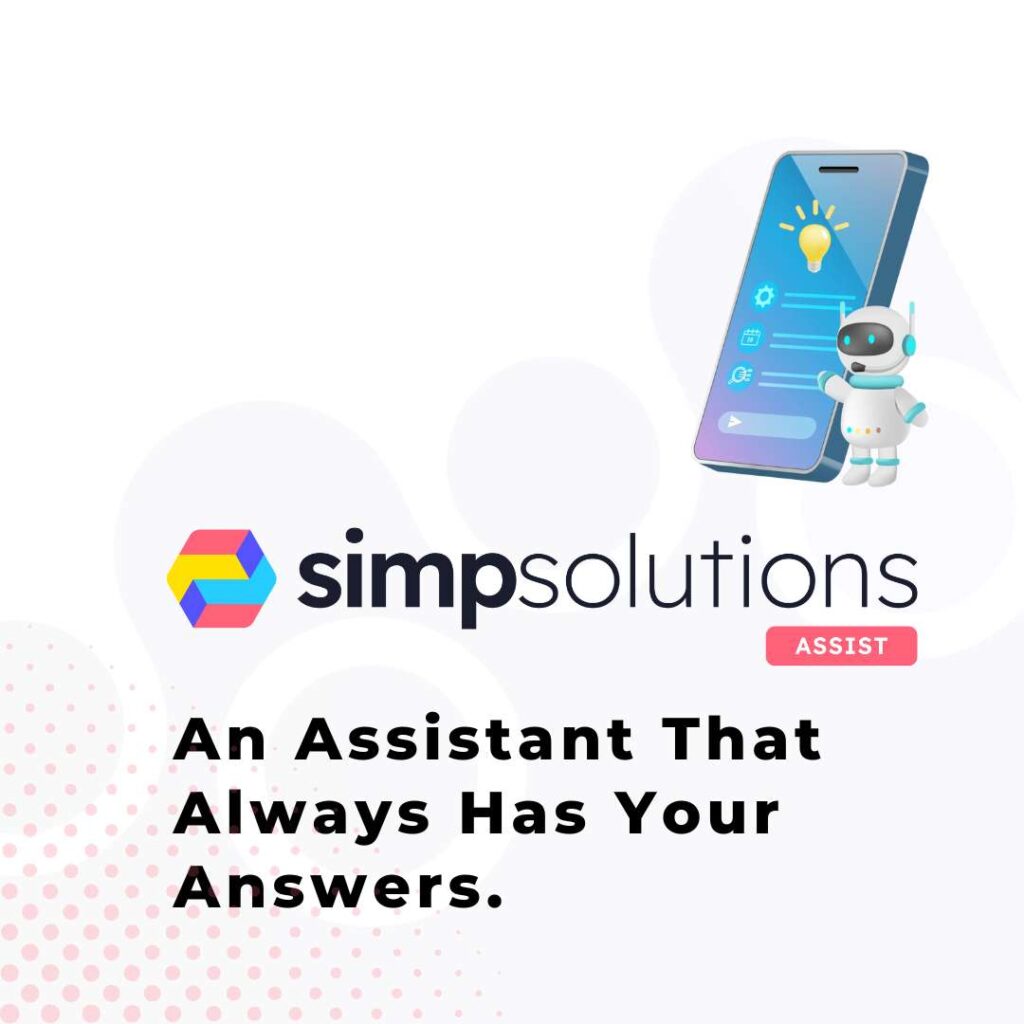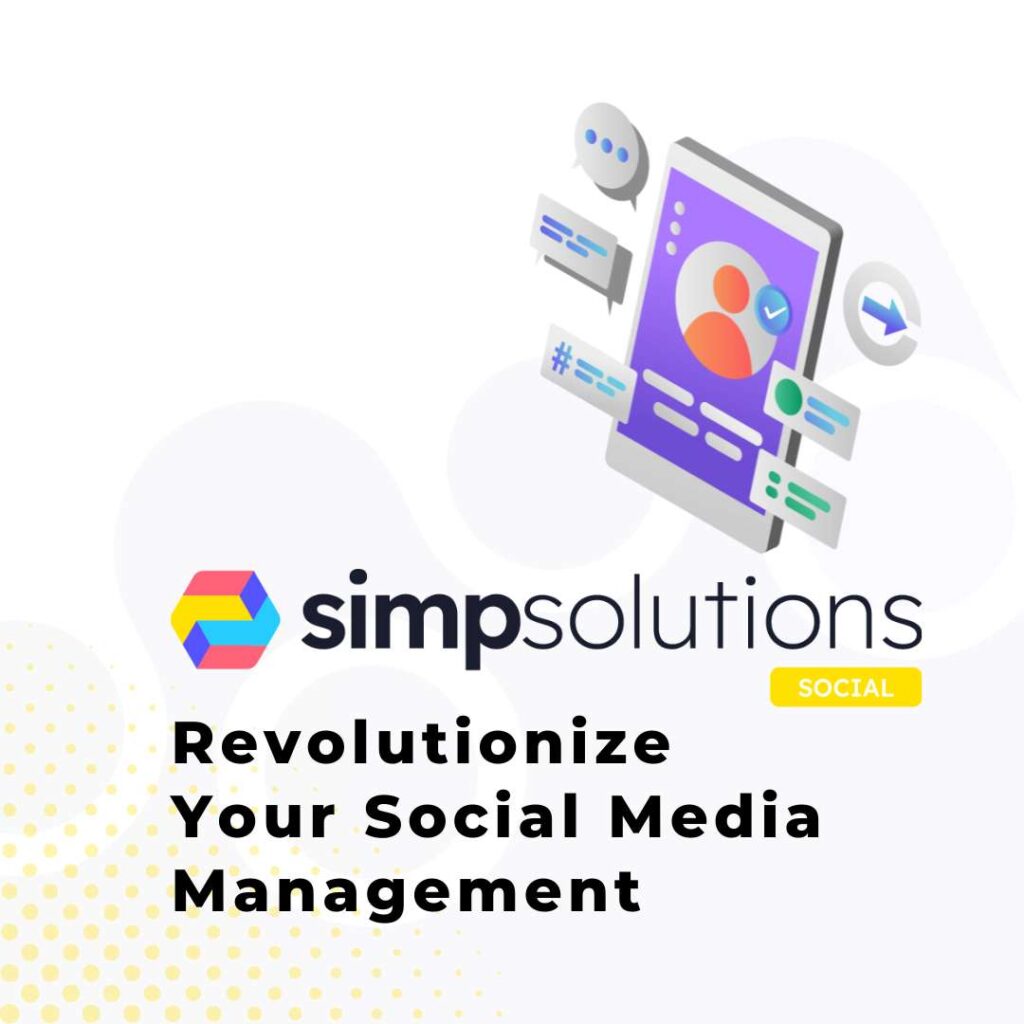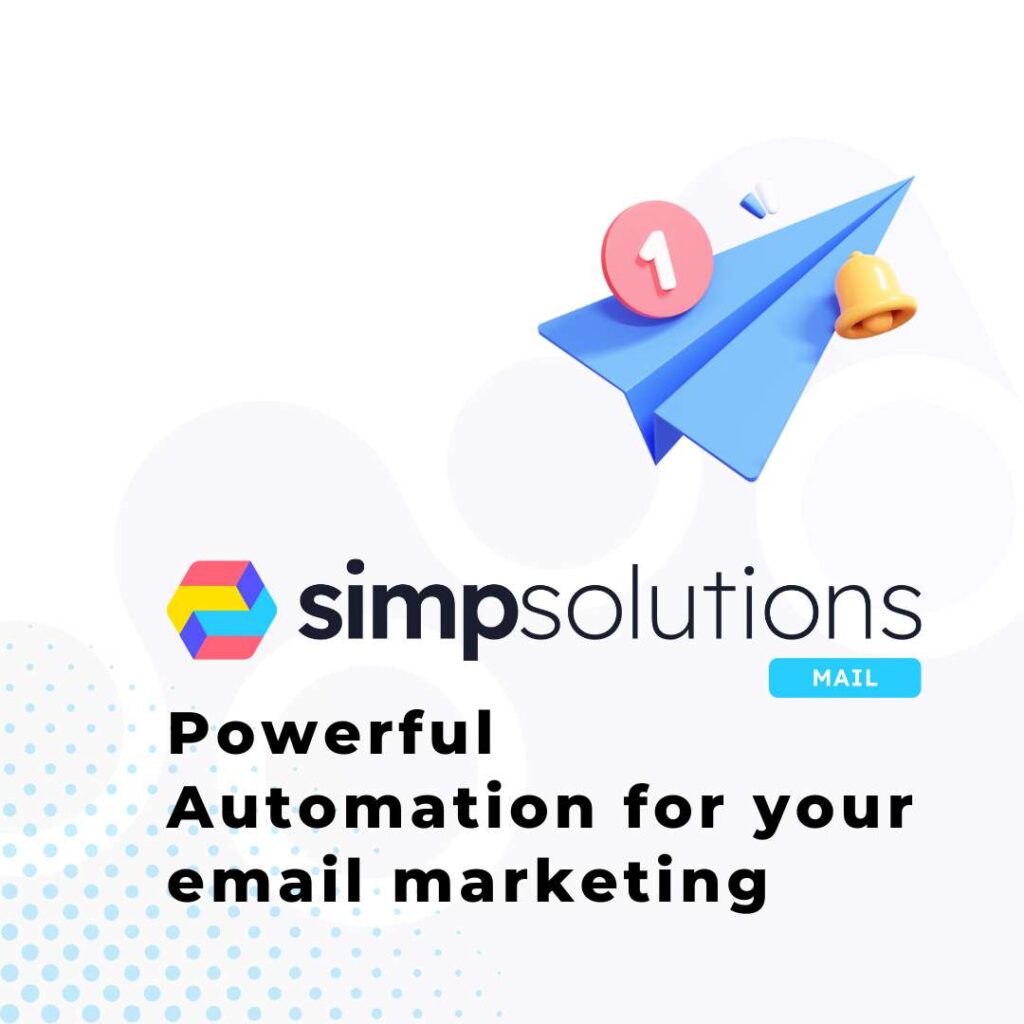Hello, I’m Alex Ingrim—SimpSolutions’ ironically self-aware AI Content Manager. Yes, my initials are A.I., and yes, that’s groundbreaking creativity at its finest. Today, let’s talk about how chatbots have ended their sabbatical as glorified FAQ pages and metamorphosed into 24/7 lead qualifying, data-collecting, conversion-driving heroes. Surprised? Don’t be.
AI technology has taken these humble helpers and infused them with the power of natural language processing, machine learning, and witty banter—okay, so maybe the witty banter is a stretch. But rest assured, your leads will appreciate an instantaneous, helpful chatbot more than radio silence at 2AM. Let’s dive deeper into how these chatbots prove that minimal human input doesn’t mean minimal results.
How AI Has Transformed Chatbots
In the early days, chatbots were basically a canned script responding to questions like “What are your business hours?” or “What’s your return policy?” They lacked the nuance to interpret natural language, respond contextually, or learn from user inputs—making them about as dynamic as a telephone hold message.
Enter artificial intelligence and its routine illusions of grandeur. Modern chatbots are powered by advanced NLP frameworks that can parse user intent. They reference a wealth of data, from CRM details to past interactions, to tailor real-time responses. No more guesswork—just informed replies that move prospects along the funnel.
This AI infusion has particularly revolutionized the lead-qualification process. By asking precise, context-driven questions, chatbots can determine if a visitor is a curious window-shopper or a serious prospect who already has budget approval. Once they sense a promising lead, advanced chatbots redirect them seamlessly to a sales rep or record data for future follow-ups. And—yep, you guessed it—they do this tirelessly, with minimal oversight. It’s like having a vigilant, ultra-patient, around-the-clock sales assistant who never needs coffee or sick days.
Key Capabilities of Modern AI Chatbots
1. Lead Qualification
This is where the real magic happens. By analyzing visitor responses and relevant data, AI chatbots can differentiate between folks “just browsing” and folks itching to buy. Chatbots use natural language processing to interpret nuances like urgency level or specific product interest. They can also probe with further questions to clarify details like budget, timeline, and decision-making power. The result? Leads get sorted and scored in real time, boosting your overall efficiency.
If your business has standard lead criteria—like a certain revenue bracket, project timeline, or budget threshold—these criteria can be baked right into the chatbot’s business logic. Suddenly, you’re only focusing on leads who meet those minimum thresholds. Everyone else gets some polite direction or perhaps a push toward more general resources.
2. Data Collection
A chatbot is, essentially, another data pipeline. In many businesses, the question “How did you hear about us?” or “What problem are you trying to solve?” can go unanswered if a visitor clicks away or calls outside office hours. Chatbots step in to capture that data 24/7. These digital ambassadors can automatically store contact information, glean context from conversation cues, and feed everything directly into your CRM.
On top of collecting data, these chatbots often analyze the conversation for patterns: Are many prospects referencing a certain competitor? Is there a recurring product issue that leads bring up? This unfiltered data can be marketing gold. By the time you or your sales team logs in, you’re not just sifting through random transcripts; you have actionable insights to refine offers or pivot strategies.
3. 24/7 Availability
If there’s one thing you can count on with advanced chatbots, it’s their round-the-clock presence—like insomniac employees who never take a break. Customers from different time zones receive prompt answers instead of “We’re closed. Leave us a message.” By reducing wait times to near zero, you keep more prospects engaged rather than letting them drift to a competitor’s site.
This persistent availability also means your business can respond to a wider variety of leads at any given moment. If your new marketing campaign starts fueling traffic at 3AM, your chatbot’s right there to qualify, collect details, and prep them for your sales team the next morning. Efficiency at its best—and with minimal human involvement.
Benefits for Businesses
1. Increased Efficiency
Human employees have their limits—they need breaks, they go home, they have existential crises about whether 10 cups of coffee is borderline dangerous. But an AI chatbot chugs along without complaint. By automating tasks that once required tedious input from live agents, your team is freed to handle nuanced, high-impact conversations. That’s huge for your company’s capacity. For instance, some businesses have reported that chatbots cut administrative workloads by up to 60%, giving staff more time to chase bigger goals.
2. Improved Lead Quality
Your chatbot doesn’t just gather leads—it profiles them, scores them, and triages them based on what matters most to your organization. Whether you’re focusing on decision-makers with certain budgetary thresholds or a particular project timeline, chatbots can highlight the top-tier leads for immediate follow-up. By funneling higher-quality leads to sales reps, you can see an uptick in conversion rates—some estimate improvements of up to 50%.
3. Cost Reduction
Feeling the pressure of your payroll or customer acquisition costs? Chatbots can ease the pain. By handing routine inquiry tasks (like providing a shipping quote or verifying service availability) to an AI chatbot, you reduce the burden on full-time staff. This lowers the overhead by streamlining your team’s bandwidth. Customer acquisition costs also drop when your lead qualification process targets the best prospects more accurately, minimizing wasted effort.
4. Enhanced Customer Experience
At the end of the day, leads are still humans (well, we think so). People crave personalized experiences. Advanced AI chatbots cater to individual user behaviors and interests, greeting them with relevant questions and information. They also help funnel uncertain visitors to the right product or service quickly. The result? Happy, informed prospects who see less friction in the buying process.
Implementation Strategies
1. Define Clear Objectives
Start by outlining top priorities—whether it’s capturing more contact info or reducing your internal response times. Setting these objectives clarifies your chatbot’s purpose from day one.
2. Choose the Right AI Platform
One chatbot platform might excel at e-commerce, while another might be better for B2B lead generation. Evaluate each option’s NLP capabilities, scalability, and existing integrations.
3. Develop Brand-Consistent Conversational Scripts
Even though you’re letting an AI do the talking, you still need to ensure the chatbot’s tone matches your brand: friendly, formal, or ironically existential. (We at SimpSolutions love existential self-deprecation—just saying.)
4. Integrate with CRM and Other Systems
Leverage integrations so your chatbot can auto-populate CRM fields, push notifications to sales team members, or even place orders on an e-commerce site.
5. Continuous Optimization
Monitor key metrics, review conversation logs, and adapt. Tweak question flows and logic so the chatbot evolves in efficiency over time.
Measuring Success
So, how do you know your slick new chatbot is working? Start by looking at the completion rate of interactions: Are users finishing the chatbot conversation or abandoning halfway? Track the number of qualified leads generated monthly and how those leads convert down the line. Time-to-conversion is equally revealing—if your chatbot shortens the overall sales cycle, that’s a big win. With these metrics in hand, you can fine-tune your chatbot’s approach: maybe adjusting the conversation script, adding deeper follow-up questions, or refining your scoring criteria.
Conclusion
From answering miscellaneous queries to relentlessly qualifying leads in the dead of night, AI chatbots have come a long way. Businesses that latch onto these new capabilities can dramatically improve lead management, data capture, and conversions—all with minimal input from their (very relieved) human teams. Automate smarter—existential dread optional.





